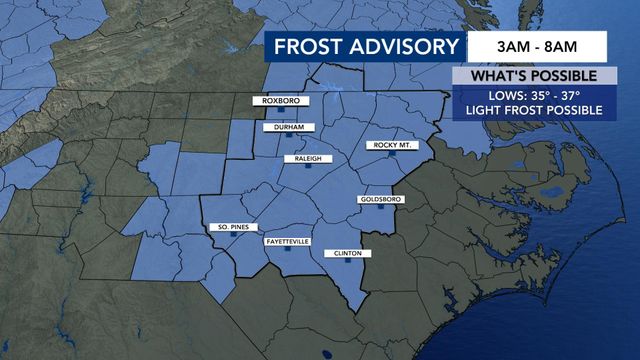Prince Andrew’s Friendship With Epstein Joins a List of Royal Scandals
LONDON — The British monarchy has survived public crises before — religious schisms, revolutions, murderous kings — but this week the royal family scrambled to confront a relatively new opponent: the embarrassing televised interview.
The Duke of York, better known as Prince Andrew, the second son of Queen Elizabeth II, struggled to defend himself during a 50-minute interview with the BBC as he talked about his friendship with Jeffrey Epstein, the disgraced financier accused of sex trafficking.
His interview, widely criticized in the British press as disastrous after it was broadcast last weekend, catapulted a long-simmering controversy into a full-blown scandal for the royal family, among the worst in its modern history.
Reacting to the backlash, the prince announced Wednesday that he was indefinitely stepping away from public life, with permission from the queen. But over the past century, a number of scandals have rattled the British royal family.
Andrew’s friendship with Jeffrey Epstein
The prince’s relationship with Epstein, whom he met in 1999, has been under scrutiny for years. In the BBC interview, the prince said he had attended dinner parties in which Epstein hosted “cosmopolitan” figures from politics, academia and business, and the men visited each other’s homes several times.
But Andrew said he had seen “no indication” of wrongdoing by Epstein at the time.
In 2008, Epstein pleaded guilty to charges of soliciting prostitution, and served 13 months in a Florida county jail under a widely criticized plea deal. After his release in 2010, Andrew stayed at Epstein’s Manhattan mansion and was widely criticized for continuing the relationship.
This summer, after the financier was arrested on federal charges and details of allegations against him began to emerge, attention again turned to Andrew’s friendship. In August, Epstein killed himself in a New York jail.
One of his accusers, Virginia Roberts Giuffre, said that Epstein had trafficked her to Andrew, and that the prince had sex with her three times, an accusation that he denies. As pressure mounted, the prince agreed to the BBC interview.
But the response to the broadcast was immediate and vocal, especially around what appeared to be the prince’s lack of sympathy for Epstein’s victims. Businesses and organizations associated with the prince quickly distanced themselves from him.
Charles and Diana’s failed marriage
Andrew was not the first royal of his generation to find himself under fire after a televised interview. His older brother, Prince Charles, in an effort to win back popularity after separating from his first wife, Diana, agreed to appear in a 1994 documentary. But when the prince confessed to adultery, he immediately lost the good will he had been desperately trying to rebuild.
Their father, Prince Philip, said at the time that he did not understand why his son would air his troubles in public, but the interview had been approved in advance by the queen.
A year later, Princess Diana said in an interview that “there were three of us in this marriage,” referring to Charles and Camilla Parker-Bowles, who later became his second wife. Charles and Diana divorced in 1996 after years of separation.
The next year, after Diana died in a car accident in Paris while being followed by the paparazzi, the royal family came under fire for appearing to be “indifferent to the country’s sorrow.”
Princess Margaret’s love life
Two decades before Charles’s divorce, the divorce of his aunt, Princess Margaret, from the Earl of Snowdon scandalized the royal family.
For decades, Margaret had found herself at the center of scrutiny from within the royal family and from the public, mostly centered on her love life, at times drawing sympathy and at others attracting admonishment.
Her fun-loving nature and glamorous lifestyle — with parties, extravagant clothes and celebrity friends — became a staple of the British press.
But her romance in the 1950s with Group Capt. Peter Townsend, a divorced royal aide, was a tipping point. Her sister, Elizabeth, was head of the Church of England, which forbade divorce. And with memories of the uproar surrounding the abdication of King Edward VIII to marry a twice-divorced American still fresh, there was intense pressure on Margaret to end the affair.
The princess chose not to step away from royal life and marry him.
Nearly a decade later, she fell for a photographer, Antony Armstrong-Jones, who became the Earl of Snowdon after they married. But their tumultuous relationship ended in divorce in 1976.
Margaret’s love life became a major plot point in the Netflix period series “The Crown,” which explores the inner world of the royal family.
A gaffe-prone Philip
Elizabeth’s 98-year-old husband, Philip, the Duke of Edinburgh, has found himself in hot water over offhand comments to the press. Unlike his wife, who maintains a measured public persona, he can be blunt and prone to gaffes.
Some of his comments have been offensive or outright racist.
“If you stay here much longer, you’ll all be slitty-eyed,” he told British students in China during a 1986 visit. “It looks as if it was put in by an Indian,” he said in 1999, pointing to an old-fashioned fuse box in a factory in Scotland. “Everybody was saying we must have more leisure. Now they are complaining they are unemployed,” he said during the 1981 recession.
Early this year, he gave up his driver’s license after a collision on a rural road north of London raised questions about his abilities behind the wheel. Two days after the crash, he was photographed driving without his seat belt fastened and was reprimanded by a police officer.
The brief reign of Edward VIII
In the 1920s, Prince Edward, Elizabeth’s uncle, was so well known for his indulgences that he was the subject of a song: “I danced with a man who danced with a girl who danced with the Prince of Wales.”
But it was a relationship with one particular woman that ultimately shook the royal family.
In 1930, he met Wallis Simpson, a married woman from Baltimore who traveled in the same high-society circles. After the death of his father, King George V, Edward pursued her despite the opposition of his mother, Queen Mary, and the prime minister at the time, Stanley Baldwin.
When the prince succeeded his father to the throne in 1936, a standoff ensued. Simpson sought a divorce from her husband, and the British government advised the new king against marrying her.
The government tried to keep the story out of the British press, but U.S. newspapers broke the news. Within months, King Edward abdicated the throne, saying that it was “impossible to carry the heavy burden of responsibility” and to remain in power “without the help and support of the woman I love.”
The couple were dogged for years by accusations of being Nazi sympathizers. She denied supporting Hitler, but in 1935 Edward urged members of the British Legion to visit Germany, and in 1937 the couple met Hitler in Berchtesgaden in the Bavarian Alps, embarrassing Edward’s brother, King George VI.
Footage taken in the early 1930s showed Edward raising his hand in the style of a Nazi salute, alongside his mother and niece, the future Queen Elizabeth, who was then 6 or 7, in an apparent pantomime.








